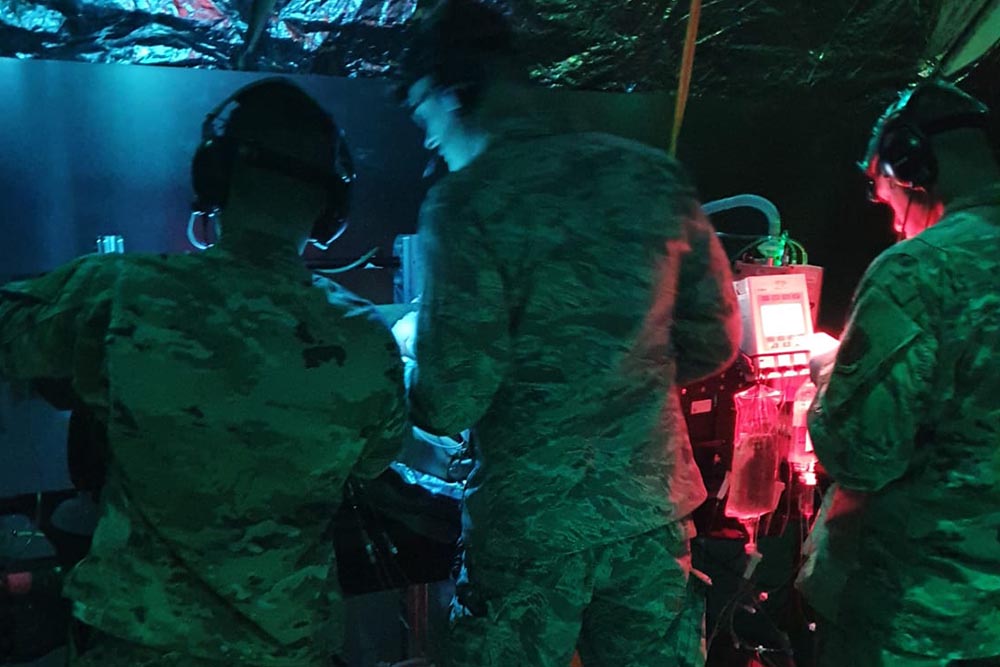
Ready at a Moment's Notice
You’re going with us, right?” the paramedic asked me.
It was hard to recognize the person on the stretcher in the back of the crowded ambulance. Tubes and wires snaked from the warming blankets around him: IV lines, chest tubes, balloon pump, a ventilator. Outside, it was pitch black, except for the frequent lightning illuminating the sky as storms rolled in from the Gulf of Mexico. For a split second, I considered how, just 24 hours before, an uncomplicated case of heart failure in a 45-year-old man had exploded into something very different.
“I need all the help I can get,” the paramedic pleaded, bringing me back to reality.
As a critical care nurse, I had just helped get a patient in heart failure ready for emergency transport from our military treatment facility to the civilian hospital the next town over. As a soldier, I was trained to be “ready at a moment’s notice,” a military adage that often meant deploying to far-flung corners of the world. However, as I grew into a highly skilled nurse, it also encompassed responding to critical care emergencies at the home station.
It took less than five minutes to be ready. I spoke with my charge nurse, grabbed a “go bag,” and became part of the emergency transport, administering care as the ambulance flew through the hospital gates. During the 30-minute ride, we dealt with an impaired Impella motor, replaced multiple vasopressors, and administered three units of blood and plasma to get the patient to his destination alive. Arriving at the next hospital, we breathed a sigh of relief to see the life support team ready to receive us in the operating room.
For a split second, I considered how, just 24 hours before, an uncomplicated case of heart failure in a 45-year-old man had exploded into something very different.
Air Force Captain Jared Sangiorgi. DNP student
Critical care nurses in the U.S. Air Force—across the U.S. Armed Forces, in fact—train and prepare for every scenario possible. I am certified in Advanced Cardiac Life Support, Pediatric Advanced Life Support, and Advanced Trauma Life Support, among others, despite being stationed at a 30-bed military hospital with limited critical care resources on the Gulf Coast. While emergency transport may not have been my typical role, if it wasn’t for the multi-level preparation of my military training and the ability to be ready at a moment’s notice, that man wouldn’t have seen his 46th birthday a few days later—thanks to a new heart that had been transplanted into his chest. I am grateful for my military training and for the lives I’ve helped save because of it.

A member of the U.S. Air Force since 2015, Jared is a DNP student who will graduate in May 2025.
No tags found!

